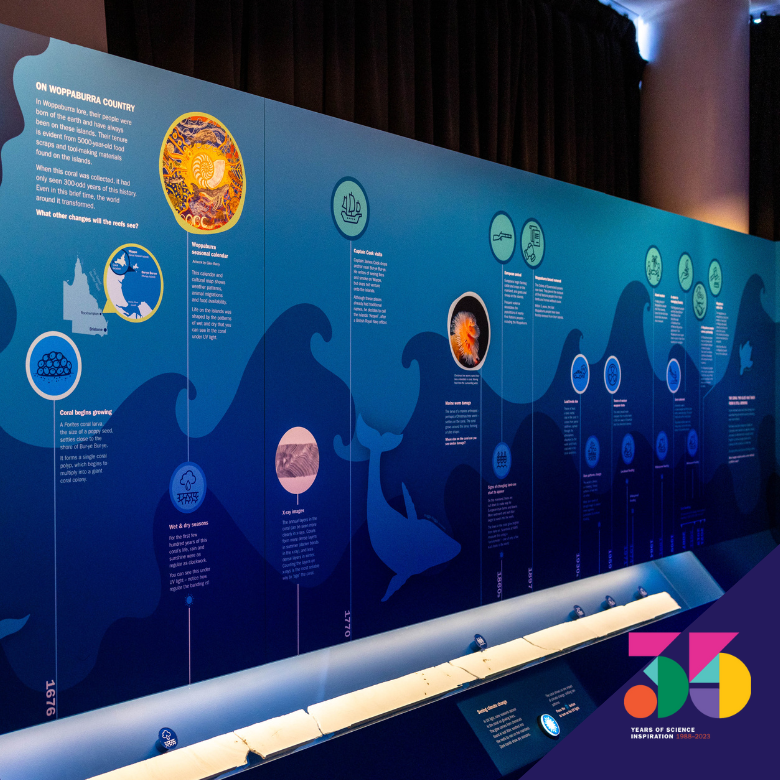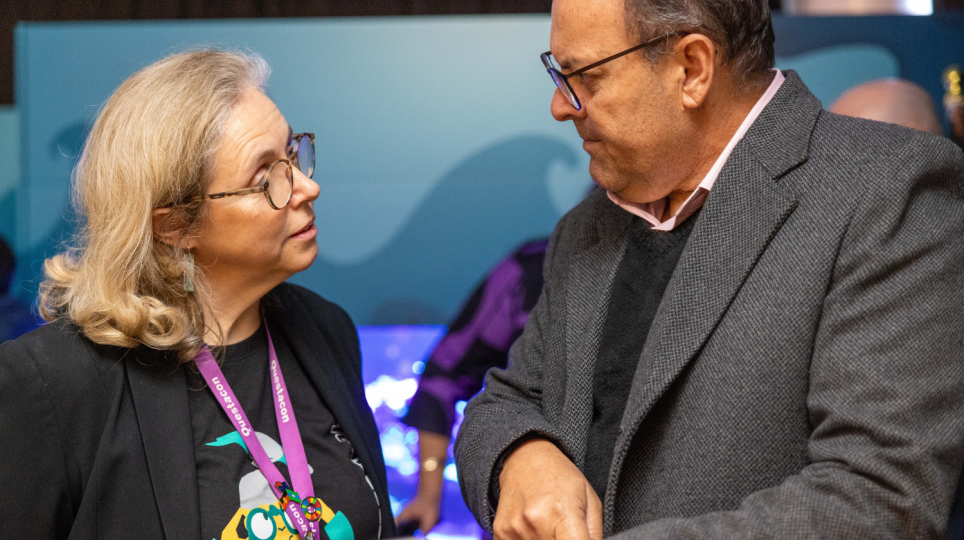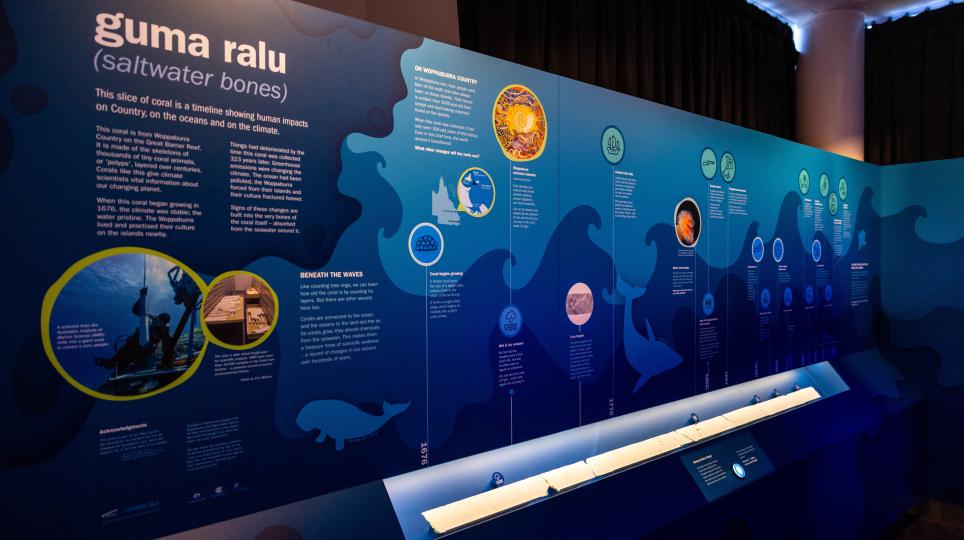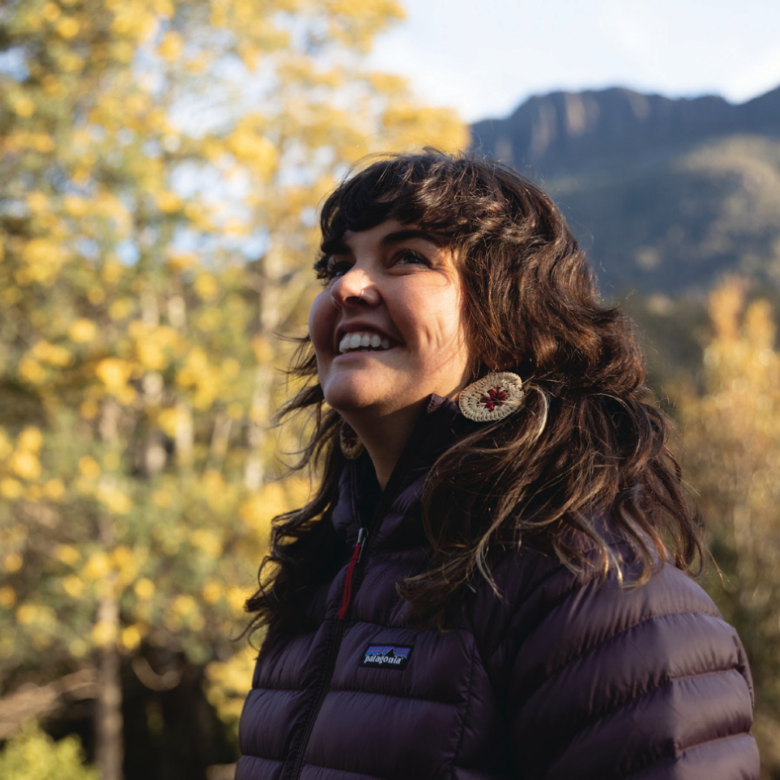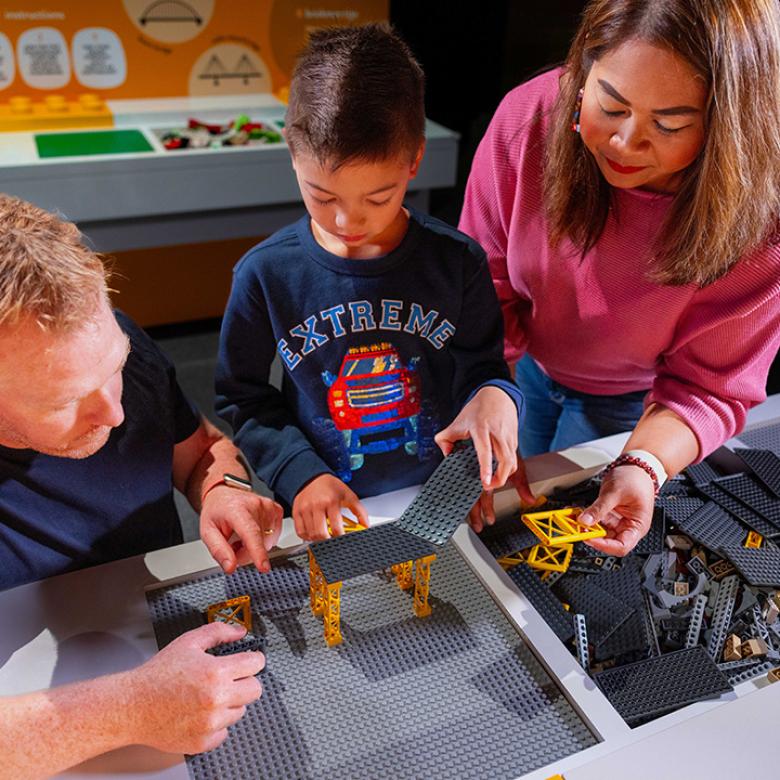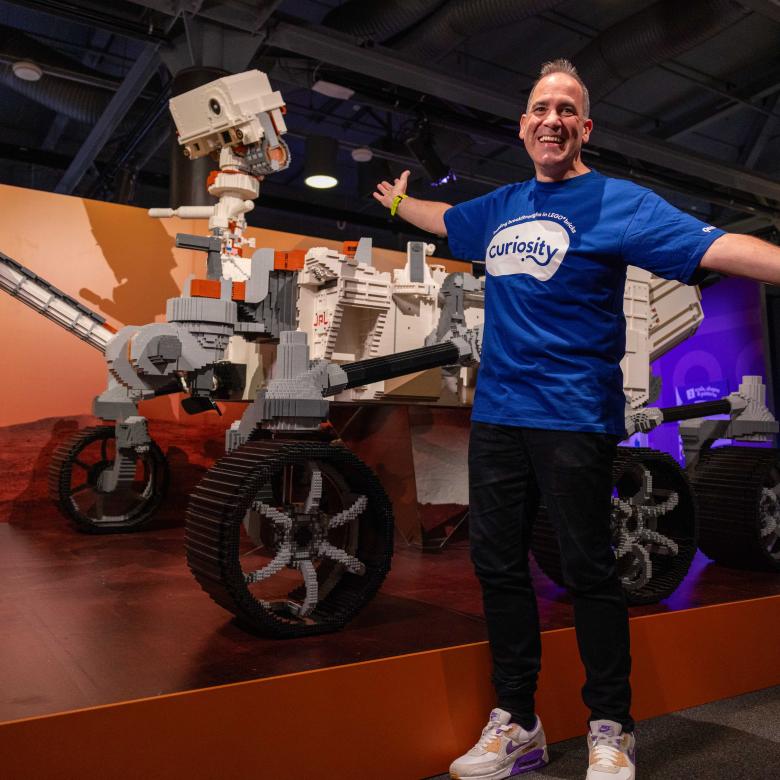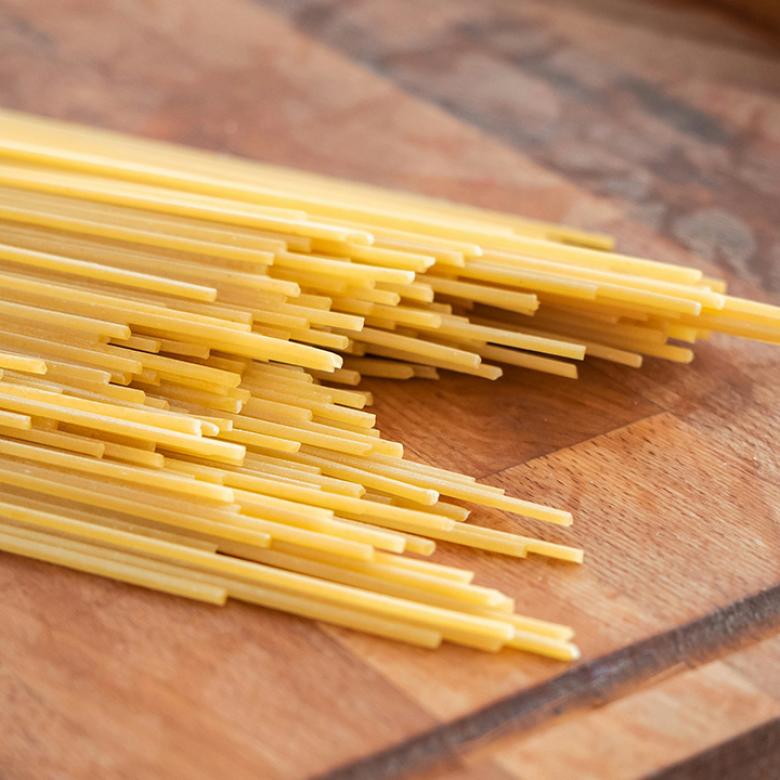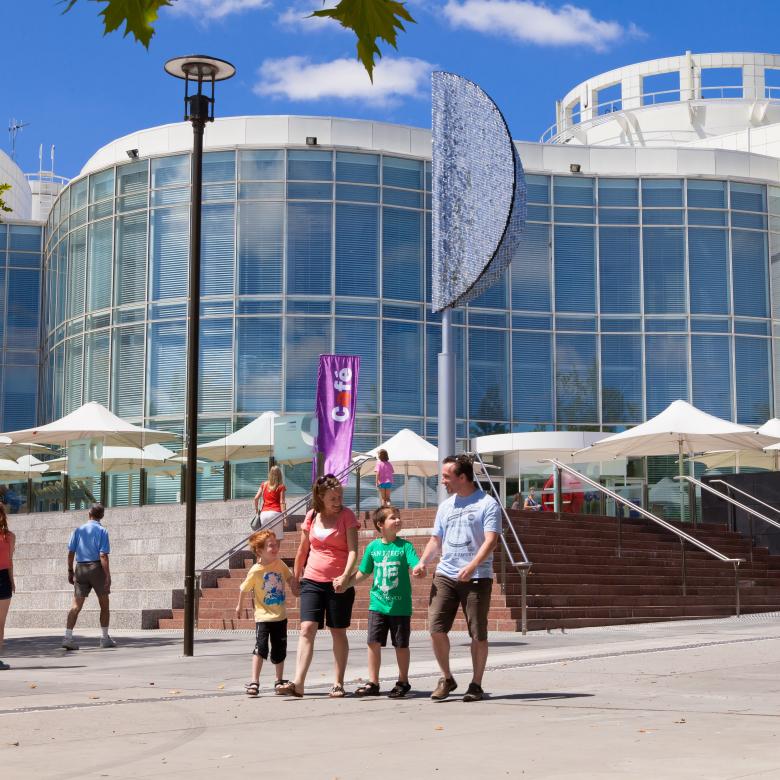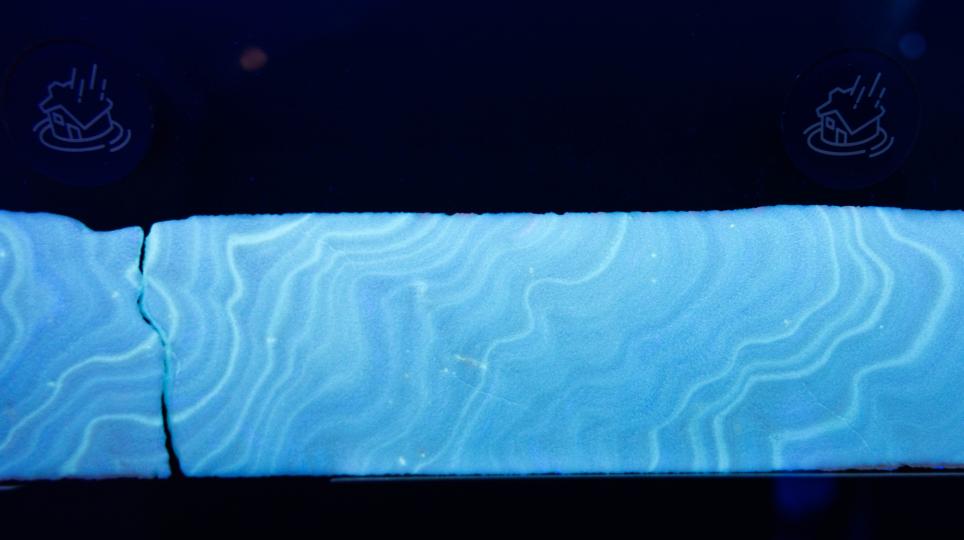 At the heart of the Guma Ralu exhibit is a long, pale section of coral. It doesn’t look like much at first, but these skeletal remains are a powerful scientific record.
At the heart of the Guma Ralu exhibit is a long, pale section of coral. It doesn’t look like much at first, but these skeletal remains are a powerful scientific record.
Hailing from Woppaburra Sea Country, off the coast of central Queensland, the coral contains the chemical signatures of ocean conditions over the past 350 years.
Trace elements captured and stored by the growing coral track our changing climate, as well as the impacts of agriculture, leaded petrol and more.
The display explores these stories alongside the cultural and social history of the Woppaburra – from 100 years before European settlement and the displacement of their people to their eventual return and ongoing participation in managing Sea Country.
The coral core holds immense significance to Dr. Harry Van Issum, a proud Woppaburra man and co-developer of Guma Ralu. He described it as a connection to his ancestors and his people.
"The piece of coral to me is significant because it’s from a reef so close to the shore, and I can just imagine my ancestors going out and swimming around it, standing on it, catching fish near it. When I’m near the coral core, I feel a deep connection to my people and their history,” he said.
Guma Ralu illustrates hundreds of years of history. The coral core is a unique vehicle used to tell the story of changes to country, influenced by key events in our shared history. It was a privilege for our staff to coordinate the transfer of custodianship between the Woopaburra and Ngunnawal Nations, and make this story available to all who visit Questacon.
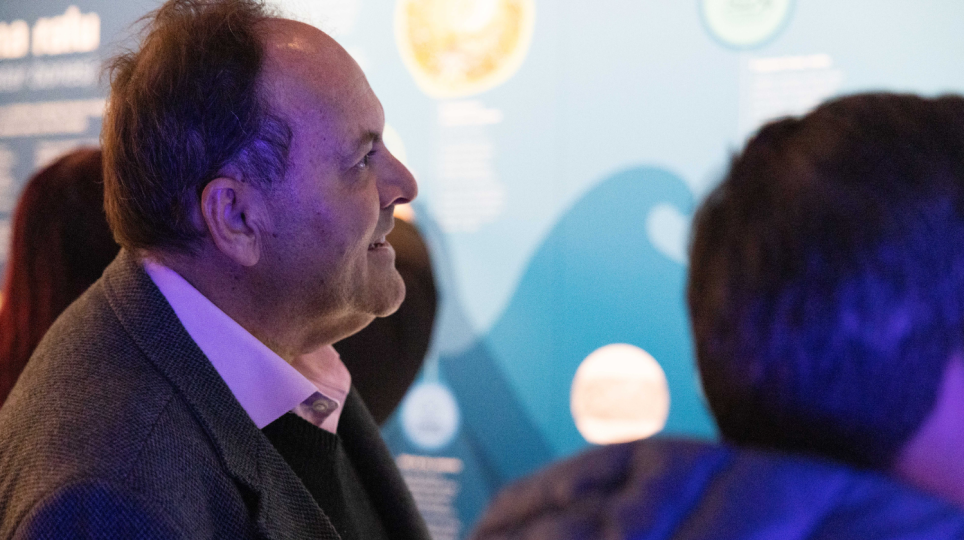 “At the start I thought what was missing from the exhibit was the human dimension, so I was responsible for writing the Woppaburra history into the timeline to sit alongside it,” said Dr Van Issum.
“At the start I thought what was missing from the exhibit was the human dimension, so I was responsible for writing the Woppaburra history into the timeline to sit alongside it,” said Dr Van Issum.
“I was really happy with the result. There was co-design, it was written by a First Nations person, we had aboriginal languages on it, and we had aboriginal totems. So a lot of positives have come out of that one project and we can build on that down the track.”
He said the Ngunnawal people have now taken on custodianship of the coral core while it’s on Ngunnawal Country.
"Coming down to Canberra and talking to the Ngunnawal people, I’m saying we appreciate you having this on your land, but there's a responsibility as well. That's to look after that core because it's important to us. They took on that responsibility and saw it as something very important and a way to welcome us down here.”
Questacon's Senior Manager of Exhibitions, Anita Beck, described the profound impact of Guma Ralu on Questacon staff and visitors.
“The exhibit has been a catalyst for conversations about the long history of First Nations people taking care of Country and the impact of European settlers on the Australian environment.
“The coral core is a unique illustration of changes to country, influenced by key events in our shared history. It was a privilege for our staff to coordinate the transfer of custodianship between the Woopaburra and Ngunnawal Nations, and make this story available to all who visit Questacon.
“Guma Ralu has strengthened our commitment to working with First Nations Australians to share their stories, knowledge and practice of science and technology. It’s important to learn, not just the scientific facts, but the cultural and human context of those facts.
"Australia’s First People were this continent’s first scientists, innovators and technologists and they have an extraordinary wealth of knowledge and understanding. Questacon is committed, alongside our First Nations partners and friends, to bring this knowledge to the public,” Ms Beck said.
“Through our reconciliation implementation plan, we continue building relationships and connections with communities, elders and knowledge holders. 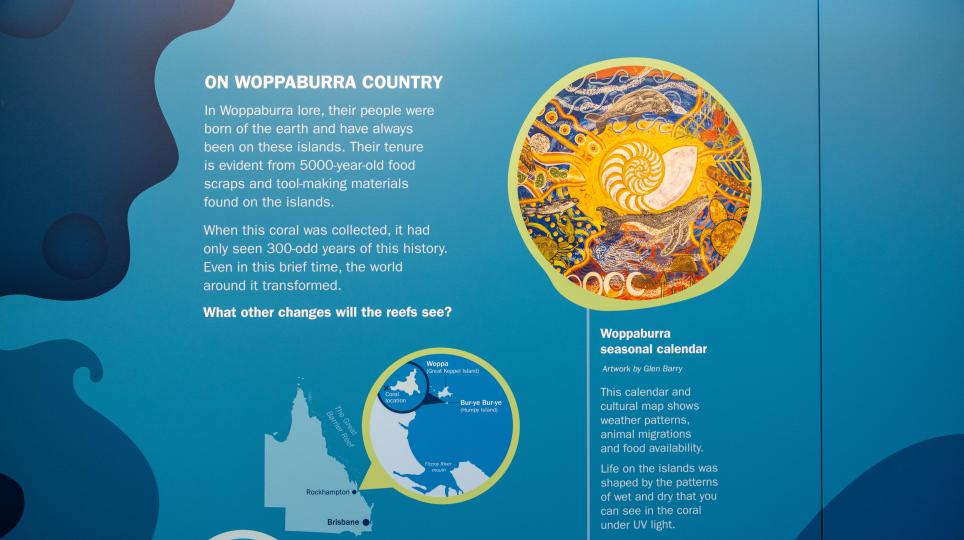
“By increasing the presence of Australia’s Indigenous knowledge and heritage at Questacon, we hope to create a more inclusive and culturally rich nation that will benefit us all.”
You can find this beautiful exhibit in the Aquarium Alcove, between Gallery 1 and 2 in the Questacon Centre.

